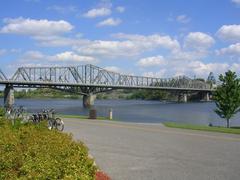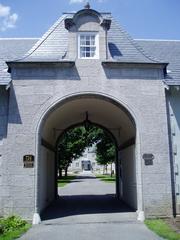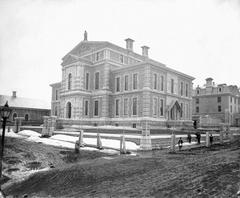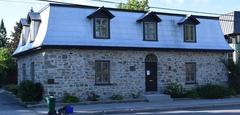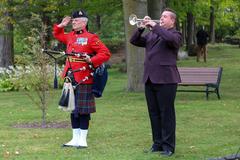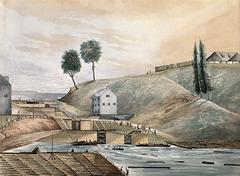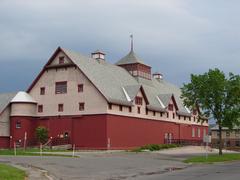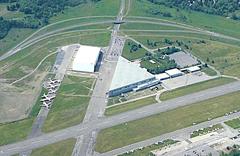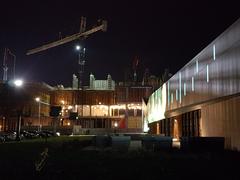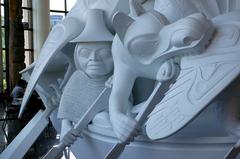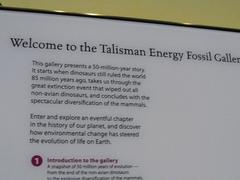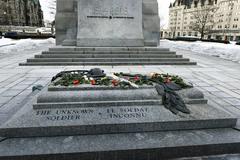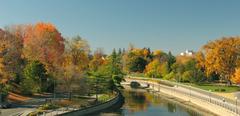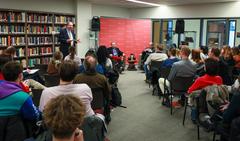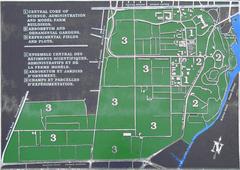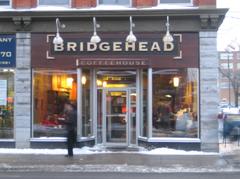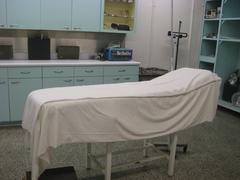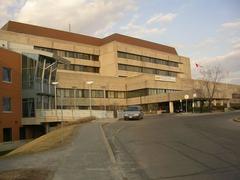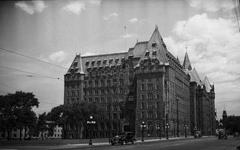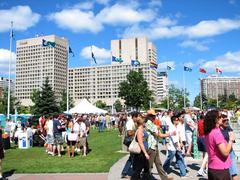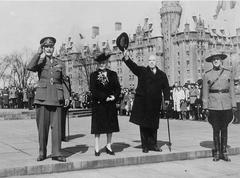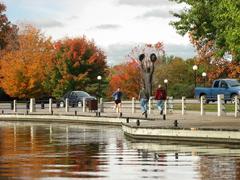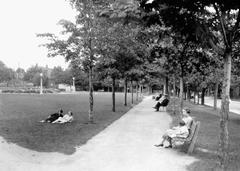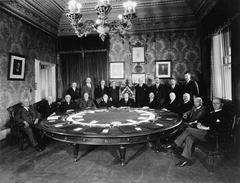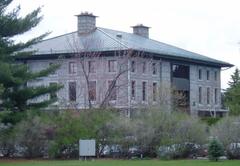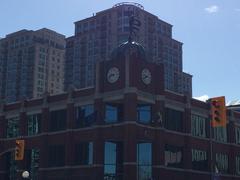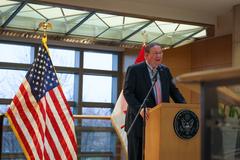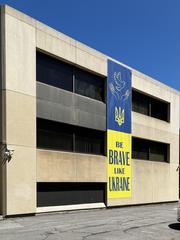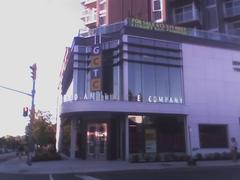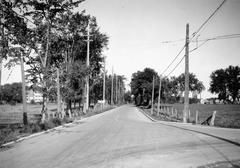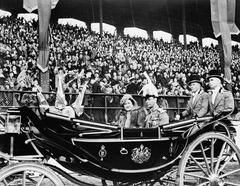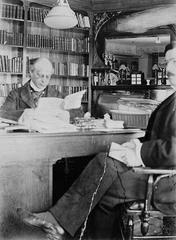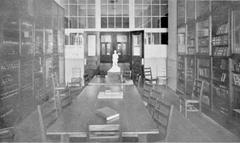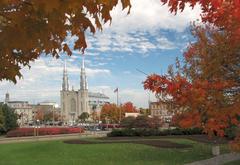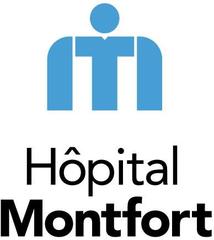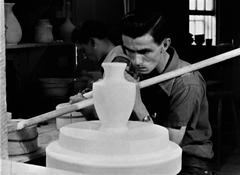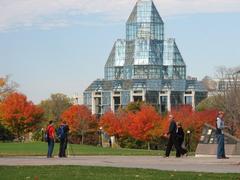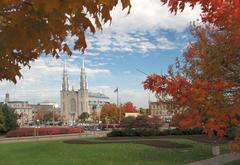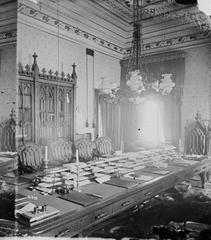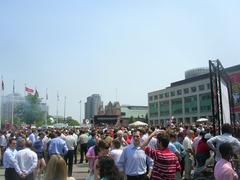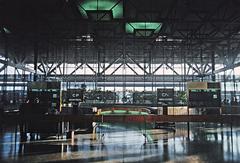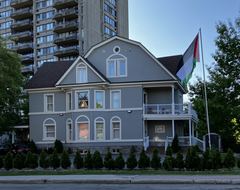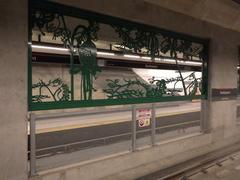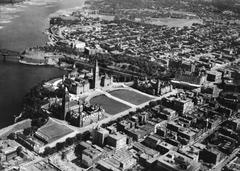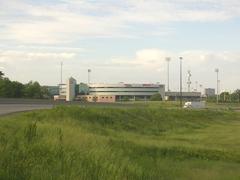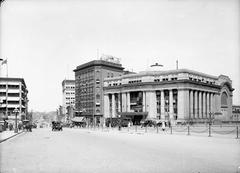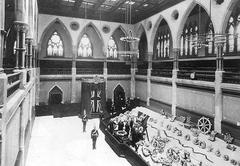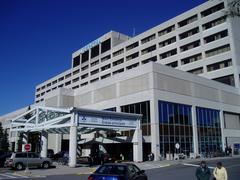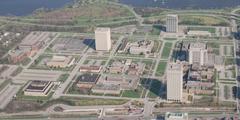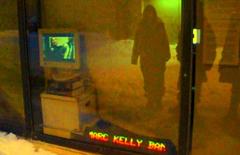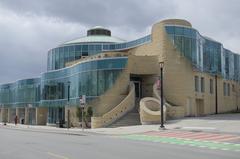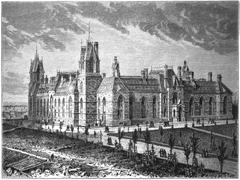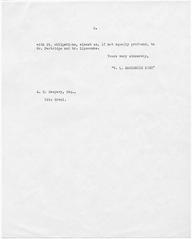
Christ Church Cathedral Ottawa: Visiting Hours, Tickets, and Comprehensive Visitor Guide
Date: 04/07/2025
Introduction
Christ Church Cathedral, nestled in the heart of Canada’s capital, is an enduring symbol of spiritual heritage, architectural grandeur, and national history. Established in 1832, the cathedral has accompanied Ottawa’s transformation from a frontier town to a vibrant capital city. Today, it stands as a magnificent Gothic Revival edifice, renowned for its soaring spire and its significance as the seat of the Anglican Diocese of Ottawa. Since 1979, it has also been recognized as the Cathedral of the Canadian Armed Forces Anglican Military Ordinariate, underscoring its pivotal role in national and civic life (Canadian Heritage).
Christ Church Cathedral is more than an architectural masterpiece; it is a dynamic center for worship, music, culture, and community engagement. Its English Gothic Revival style, conceived by architect Thomas Fuller, features pointed arches, intricate stained glass, and finely carved woodwork, all exemplifying the spiritual and artistic aspirations of 19th-century Canada (Ottawa Cathedral Restoration, Historic Places). Inside, visitors are greeted by luminous stained glass and the resonant tones of a Casavant Frères pipe organ, fostering an atmosphere of reverence and celebration.
The cathedral offers free admission, with guided tours available to illuminate its rich history, architectural features, and cultural importance. Accessibility is a priority, and the cathedral welcomes all guests with accommodations and amenities for a comfortable visit (ottawacathedral.ca). Its central location, near Parliament Hill and the ByWard Market, makes it an essential stop for anyone exploring Ottawa’s heritage (Ottawa Tourism, Ottawa Anglican).
This guide covers the cathedral’s storied past, architectural highlights, visitor information including hours and tickets, accessibility details, and insider tips for a rewarding visit.
Table of Contents
- Early Foundations and Growth (1832–1897)
- Cathedral Status and National Significance (1897–1979)
- Architectural Heritage and Restoration
- Architectural Style and Context
- Exterior Features and Symbolism
- Interior Layout and Experience
- Stained Glass and Artistic Treasures
- Woodwork and Liturgical Furnishings
- The Organ and Musical Heritage
- Visiting Information: Hours, Tickets, and Tours
- Accessibility and Visitor Amenities
- Nearby Attractions and Travel Tips
- Visitor Experience: What to See and Do
- Practical Tips for Visitors
- Spiritual and Cultural Importance
- Community Role and Reconciliation
- Interfaith Dialogue and Social Outreach
- Events and Civic Engagement
- Worship and Spiritual Practices
- Accessibility and Inclusivity
- Symbolism and National Significance
- FAQ
Early Foundations and Growth (1832–1897)
Christ Church Cathedral’s origins trace to 1832, when a modest wooden church was erected to serve Ottawa’s Anglican community. As Bytown grew and became the capital in 1857, a larger stone cathedral was commissioned to reflect Ottawa’s spiritual ambitions. Designed in the Gothic Revival style, the current building’s cornerstone was laid in 1872, with completion in 1873 (Canadian Heritage, Ottawa Cathedral Restoration).
Cathedral Status and National Significance (1897–1979)
Elevated to cathedral status in 1897, Christ Church became the seat of the Anglican Diocese of Ottawa. Its national significance increased in 1979 as the Cathedral of the Canadian Armed Forces Anglican Military Ordinariate. The cathedral has hosted state funerals, royal visits—including Queen Elizabeth II and the Duke of Edinburgh—and significant civic ceremonies (Canadian Heritage).
Architectural Heritage and Restoration
Christ Church Cathedral is a designated heritage site under the Ontario Heritage Act, celebrated for its pointed arches, buttresses, and spire crafted from Nepean sandstone (Ottawa Cathedral Restoration). Restoration efforts began in 1991, addressing masonry, roofing, windows, the bell tower, and interior finishes. Major campaigns in recent years have secured the building’s structural and artistic integrity (Ottawa Cathedral Restoration).
Architectural Style and Context
The cathedral exemplifies Gothic Revival architecture, a style that gained prominence in 19th-century Canada. Designed by Thomas Fuller, also a co-designer of the Parliament Buildings, the structure’s verticality, pointed arches, and tracery echo medieval ecclesiastical traditions (Christ Church Cathedral Ottawa - History, Historic Places).
Exterior Features and Symbolism
The cathedral’s exterior is defined by its commanding central tower (40 meters/131 feet), rose window, buttresses, lancet windows, and decorative finials. Carved stonework at the entrance features Christian symbols such as trefoils and quatrefoils. The building’s cruciform plan and spire make it a landmark in downtown Ottawa (Ottawa Tourism - Christ Church Cathedral).
Interior Layout and Experience
Inside, visitors find a vaulted nave with slender columns and a high altar in the chancel. The ribbed vaulting and pointed arches enhance acoustics and light, while stained glass windows fill the space with color. The choir stalls, bishop’s throne, and processional axis emphasize the cathedral’s liturgical function (Anglican Diocese of Ottawa - Cathedral).
Stained Glass and Artistic Treasures
The cathedral’s stained glass windows, from the late 19th century to present, include a west rose window (1956) depicting Christ in Majesty, as well as nave and transept windows illustrating biblical scenes and Canadian saints. Several windows memorialize prominent Canadians, blending spiritual and national narratives (McCausland Studio).
Woodwork and Liturgical Furnishings
Intricate woodwork adorns the choir stalls, pulpit, reredos, and bishop’s throne, with motifs such as the Four Evangelists and decorative foliage. The Caen stone baptismal font features biblical reliefs, reinforcing the cathedral’s sacramental traditions (Historic Places - Christ Church Cathedral).
The Organ and Musical Heritage
The cathedral’s Casavant Frères pipe organ, with 3,500 pipes and 58 stops, is among Ottawa’s largest. Its casework complements the Gothic interior, and regular choral services and concerts highlight the cathedral’s musical legacy (Casavant Frères Organs).
Visiting Information: Hours, Tickets, and Tours
-
Hours:
- Monday: 9:00 AM – 12:00 PM
- Tuesday–Thursday: 9:00 AM – 3:00 PM
- Friday: 9:00 AM – 12:00 PM
- Saturday: Closed
- Sunday: 8:30 AM – 12:00 PM
Hours may change for holidays/events—check the official website or call ahead.
-
Admission:
Admission is free; donations are appreciated. -
Guided Tours:
Available by appointment. Group tours can be arranged through the cathedral office. -
Special Events:
Concerts, worship services, and commemorations are held throughout the year. See the events calendar.
Accessibility and Visitor Amenities
The main entrance at 414 Sparks Street is fully accessible, with lift access and accessible restrooms. The cathedral is committed to inclusivity and offers a welcoming environment for all visitors (ottawacathedral.ca).
Nearby Attractions and Travel Tips
Located near Parliament Hill, the National War Memorial, and the ByWard Market, the cathedral is central to many of Ottawa’s historical and cultural sites. Walking tours connect these landmarks for a comprehensive Ottawa experience. Weekday visits are often quieter.
Visitor Experience: What to See and Do
-
Architecture:
Soaring ceilings, pointed arches, and detailed woodwork reflect its Gothic Revival origins (ottawa.ca). -
Notable Features:
- 516-pound bronze bell from 1839, which rang on Canada’s confederation.
- “West” stained glass window depicting Ottawa’s diversity.
- Four hidden wooden mice in the woodwork—popular for families (Chamber of Commerce).
- Chapel of Reconciliation, with the Cross of Nails, highlighting the cathedral’s commitment to reconciliation.
-
Music:
Renowned Cathedral Choir of Men and Boys (Canada’s only all-male Anglican cathedral choir) enhances worship and events (Wikipedia). -
Worship:
- Sunday Eucharist: 8:00 AM (spoken), 10:00 AM (choral)
- Wednesday Eucharist: 12:00 PM
- Special services and contemplative prayer; see events calendar.
-
Quiet Spaces:
Labyrinth for meditation and reflection (ottawacathedral.ca).
Practical Tips for Visitors
-
Accessibility:
Fully accessible entrance and restrooms. -
Etiquette:
Modest attire, respectful behavior, and limited photography during services. -
Amenities:
Restrooms and a cathedral shop (when open). Numerous dining options nearby. -
Getting There:
Street parking is limited; public transit is recommended. -
Family Visits:
Children are welcome—finding the hidden mice is a highlight. -
Health and Safety:
Observe any posted protocols. -
Reviews:
Highly rated by visitors for its beauty, music, and welcoming atmosphere (Chamber of Commerce).
Spiritual and Cultural Importance
As the seat of the Anglican Diocese of Ottawa, the cathedral is a spiritual home for Anglicans and a center for major liturgies, ordinations, and civic ceremonies (Ottawa Anglican). Its open-door policy welcomes people of all backgrounds, fostering a sense of belonging and spiritual nourishment.
The cathedral is also a center for reconciliation, having hosted events in partnership with Indigenous communities and appointing advisors to guide these efforts (Parker PDF). It regularly hosts interfaith initiatives and is active in social outreach through food pantries, support groups, and global Anglican partnerships (Ship of Fools).
Events and Civic Engagement
The cathedral is a hub for Ottawa’s arts scene, hosting concerts, lectures, and festivals, including the Ottawa Writers’ Festival (Ottawa Anglican). It is also a key venue for civic and national events, reinforcing its role as a connecting point for faith, culture, and community.
Frequently Asked Questions (FAQ)
Q: What are the visiting hours?
A: Monday 9 AM–12 PM, Tuesday–Thursday 9 AM–3 PM, Friday 9 AM–12 PM, Sunday 8:30 AM–12 PM. Closed Saturdays; check the official website for updates.
Q: Is admission free?
A: Yes, donations are encouraged.
Q: Are guided tours available?
A: Yes, by appointment. Contact the cathedral office.
Q: Is the cathedral accessible?
A: Fully accessible entrance and restrooms.
Q: Can I attend worship services?
A: Yes, all are welcome.
Q: Is photography allowed?
A: Permitted outside worship times; please be respectful.
Conclusion
Christ Church Cathedral Ottawa is a living testament to the city’s history, artistry, and spiritual depth. Its Gothic Revival architecture, storied past, vibrant music ministry, and welcoming ethos make it a must-visit for locals and tourists alike. Whether you seek architectural beauty, spiritual solace, or cultural enrichment, the cathedral offers a meaningful experience in the heart of Ottawa.
Plan your visit:
- Check the official Christ Church Cathedral website for current hours, events, and tour information.
- Explore related Ottawa heritage sites and download the Audiala app for audio tours and event updates.
Visuals and Interactive Tools

- Interactive Virtual Tour of Christ Church Cathedral
- Map and Directions to Christ Church Cathedral Ottawa
References
- Canadian Heritage, 2025, Government of Canada (https://www.canada.ca/en/canadian-heritage/commemoration-her-majesty-the-queen/events/program.html)
- Ottawa Cathedral Restoration, 2025 (https://www.ottawacathedral.ca/about-us/cathedral-restoration)
- Christ Church Cathedral Ottawa - History, 2025, Anglican Diocese of Ottawa (https://ottawa.anglican.ca/christ-church-cathedral/)
- Historic Places - Christ Church Cathedral, 2025 (https://www.historicplaces.ca/en/rep-reg/place-lieu.aspx?id=10002)
- Ottawa Tourism - Christ Church Cathedral, 2025 (https://ottawatourism.ca/en/see-and-do/christ-church-cathedral)
- Casavant Frères Organs, 2025 (https://www.casavant.ca/)
- Ottawa Anglican, 2025 (https://ottawa.anglican.ca/who-we-are/our-cathedral)
- Parker PDF, 2018, Anglican Church of Canada (https://gs2025.anglican.ca/wp-content/uploads/Parker.pdf)
- ottawacathedral.ca, 2025 (https://www.ottawacathedral.ca/visit)



